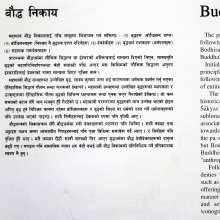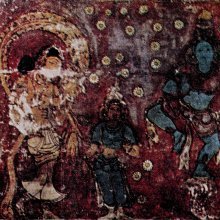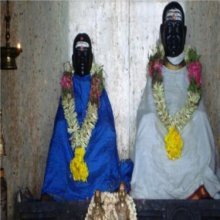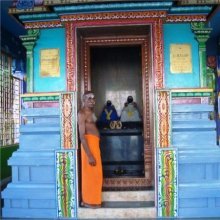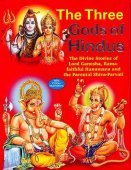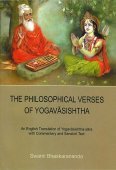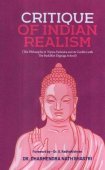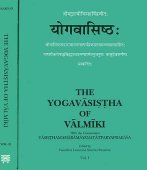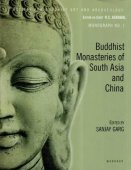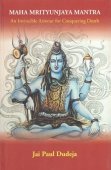Existence: 2 definitions
Introduction:
Existence means something in Buddhism, Pali, Hinduism, Sanskrit. If you want to know the exact meaning, history, etymology or English translation of this term then check out the descriptions on this page. Add your comment or reference to a book if you want to contribute to this summary article.
Images (photo gallery)
(+11 more images available)
In Hinduism
Yoga (school of philosophy)
Source: ORA: Amanaska (king of all yogas): A Critical Edition and Annotated Translation by Jason BirchExistence is denoted by the Sanskrit term Bhāva, according to the Amanaska Yoga treatise dealing with meditation, absorption, yogic powers and liberation.—Accordingly, as Īśvara says to Vāmadeva: “[...] Now, I will teach knowledge for the liberation of those people who have conquered their passion. [...] The highest reality is defined as that which is free from existence (bhāva) and non-existence, without cessation and arising and beyond all imaginings [of the mind]. [...]”.

Yoga is originally considered a branch of Hindu philosophy (astika), but both ancient and modern Yoga combine the physical, mental and spiritual. Yoga teaches various physical techniques also known as āsanas (postures), used for various purposes (eg., meditation, contemplation, relaxation).
In Buddhism
Tibetan Buddhism (Vajrayana or tantric Buddhism)
Source: ORA: Amanaska (king of all yogas): (Tibetan Buddhism)Existence is denoted in the Sanskrit language as Bhava, according to the thirty-third chapter of the Saṃvarodayatantra: a Buddhist explanatory Tantra of the Cakrasaṃvara cycle.—Accordingly, while describing the no-mind meditation: “[...] Free from meditation and concentration and beyond [both] Yoga and reasoning, he leads people to absorption in ‘suchness’, when the mind becomes steady in awareness. It is [e.g., the destruction of the bonds of existence (bhava-bandha-nāśana)] [...] inexpressible by words and even beyond the sphere of the mind”.

Tibetan Buddhism includes schools such as Nyingma, Kadampa, Kagyu and Gelug. Their primary canon of literature is divided in two broad categories: The Kangyur, which consists of Buddha’s words, and the Tengyur, which includes commentaries from various sources. Esotericism and tantra techniques (vajrayāna) are collected indepently.
See also (Relevant definitions)
Partial matches: Existence, Te.
Query error!
Full-text (+3719): Abhava, Bhava, Gati, Astitva, Samsara, Atyantabhava, Svatva, Satta, Anaikya, Sattva, Samsargabhava, Jivana, Bhavabhava, Nirvana, Sashuka, Nastika, Mukta, Jiva, Janmasaphalya, Pragabhava.
Relevant text
Search found 580 books and stories containing Existence, Existences, The existence; (plurals include: Existences, Existenceses, The existences). You can also click to the full overview containing English textual excerpts. Below are direct links for the most relevant articles:
Vipassana Dipani (by Mahathera Ledi Sayadaw)
Maha Buddhavamsa—The Great Chronicle of Buddhas (by Ven. Mingun Sayadaw)
Supplement (c): Fulfilment of the Ten Perfections < [Chapter 9 - The chronicle of twenty-four Buddhas]
Biography (34): Sobhita Mahāthera < [Chapter 43 - Forty-one Arahat-Mahatheras and their Respective Etadagga titles]
Part 8 - Hard to become even a Future Buddha < [Chapter 2 - Rare Appearance of a Buddha]
Tattvasangraha [with commentary] (by Ganganatha Jha)
Verse 578 < [Chapter 10 - The Examination of the First Category—‘Substance’]
Verse 1688-1689 < [Chapter 19d - (D) On negation (abhāva)]
Verse 3289-3290 < [Chapter 26 - Examination of the ‘Person of Super-normal Vision’]
Theravada Buddhist studies in Japan (by Keiko Soda)
5. Theory of Consciousness-only in Mahayana < [Chapter 3 - Theravada and Mahayana (comparison and contrast)]
8. Conclusion of chpater 3 < [Chapter 3 - Theravada and Mahayana (comparison and contrast)]
4. Theories of early Buddhism < [Chapter 2 - Theravada, Hinayana and Early Buddhism (critical study)]
Catusacca Dipani (by Mahathera Ledi Sayadaw)
Part IV - The Burden Of Dukkha In The Lower Planes < [The Exposition Of Four Characteristics]
Sense Object And Suffering < [Part I - The Manual Of The Four Noble Truths]
How Beings Have To Wander In The Round Of Rebirths < [Part I - The Manual Of The Four Noble Truths]
Introducing Buddhist Abhidhamma (by Kyaw Min, U)
Introduction < [Book II]
Chapter 6 - Right Understanding < [Part 2 - Meditation]
Chapter 3 - Five Groups or Aggregates < [Part 1 - Abhidhamma]
Related products
(+15 more products available)

